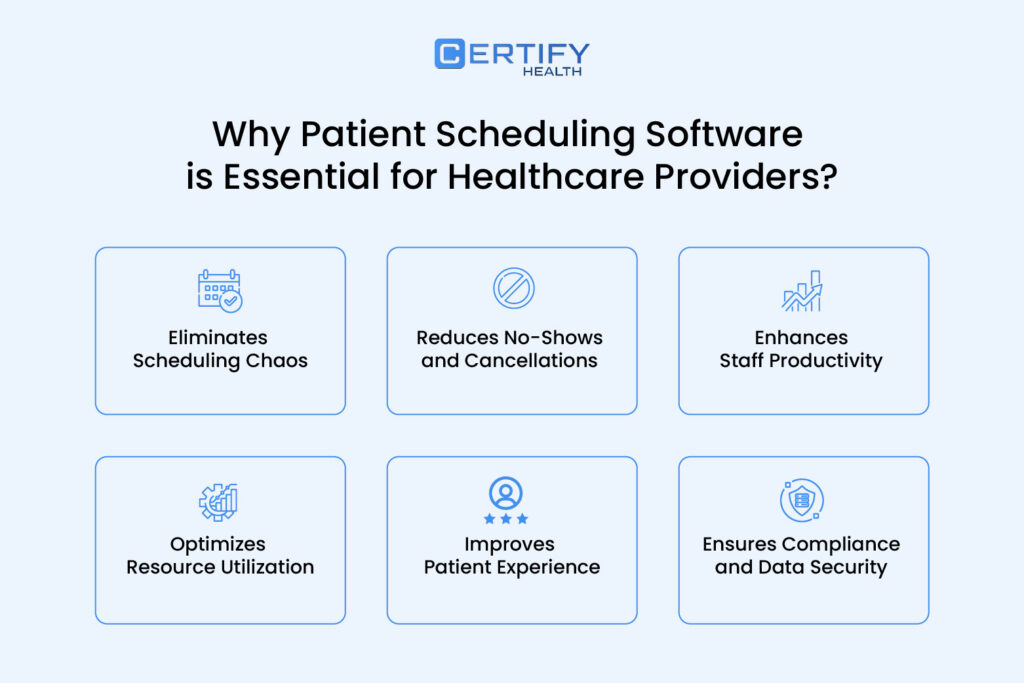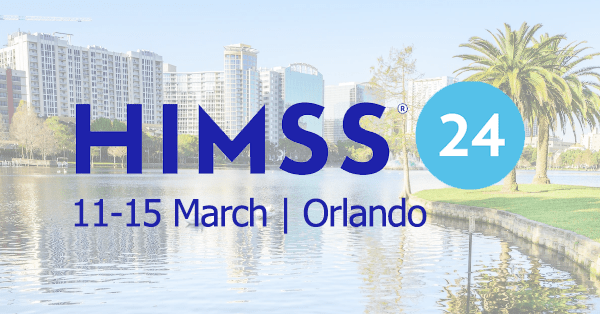Table of Contents
Introduction
It’s 6 PM—your front desk staff slump, drained by endless calls and tattered appointment books. Staffing shortages cost hospitals $24 billion extra in 2021, soaring to $86 billion(PMC analysis)—a burden still crushing practices.
Meanwhile, 67% of patients want online appointment booking, 40% try after hours when you’re closed (2024 survey)—slots slip away.
Picture a patient calling at 7 PM, hitting voicemail, and booking elsewhere—revenue gone. Burnout grips 60% of your team (AMA); manual scheduling fuels it, missing demand. Up to 80% of patients crave self-service—those who don’t get it might switch providers (survey), taking loyalty with them.
Enter patient scheduling software—your 2025 lifeline. It’s a 24/7 assistant, automating bookings, cutting admin time. A clinic slashed no-shows 25%, keeping patients. With a $1.2B market by 2030, it’s a must.
This guide unpacks what is patient scheduling software, why it’s essential, and how it transforms your day—easing staff, filling slots, locking in trust. Ready to stop scrambling?
Did you know?
As of late 2024, approximately 83% of healthcare practices still primarily rely on traditional front desk check-ins, with only 7% having fully embraced online check-in options.
What is Patient Scheduling Software?

What is patient scheduling? It’s managing appointments—once a slog of calls and paper, drowning staff in administrative burden.
Ever found yourself wishing patients could book appointments without tying up your phone lines? That’s exactly what patient scheduling software solves. It’s a digital tool that automates the entire appointment booking process, giving patients 24/7 access, offering personalized patient engagement through reminders and reducing your staff’s workload.
Think of it as your practice’s virtual front desk that never sleeps. Patient scheduling software handles everything from initial bookings to reminders, rescheduling, and even integration with your electronic health records (EHR).
The best part? It works around the clock.
While your staff is enjoying dinner or sleeping, patients can still book that urgent appointment they need. Sunday evenings between 4-8 PM actually rank as the most popular time for online bookings.
How it Works
Patient scheduling gives your patients control over their healthcare journey. They can browse available time slots, select preferred providers, and online appointment booking through your website, patient portal, or mobile app – all without picking up a phone.
Behind the scenes, the software manages your calendar based on custom rules you set. Need 30 minutes for new patients but only 15 for follow-ups? The system handles that automatically. Some even verify insurance information during booking.
When the appointment is confirmed, automatic reminders go out via text, email, or app notifications. These simple nudges can reduce no-shows by up to 30% – that’s money back in your pocket from appointments that would’ve been missed.
Types of Scheduling Software
Not all patient scheduling solutions are created equal. Some are basic standalone tools that handle just the appointment calendar. These work well for small practices just dipping their toes into digital scheduling.
For growing practices, integrated practice management systems combine scheduling with billing, EHR access, and other administrative functions. Everything works together seamlessly, reducing duplicate data entry.
The most advanced options now leverage AI and predictive analytics. These smart systems can recommend optimal appointment times, predict no-show risks, and automatically adjust your schedule as needed.
Why Patient Scheduling Software is Essential for Healthcare Providers
In 2025’s challenging healthcare landscape, the old ways of scheduling just don’t cut it anymore. With staffing shortages and rising costs, your team needs to focus on higher-value tasks than answering phones all day.
Did you know that as per one study it is revealed that while 54% of appointments are still scheduled by employees, 46% are now made online by customers? That’s nearly half your scheduling workload potentially eliminated through automation.
The financial impact is impossible to ignore. No-shows and last-minute cancellations create revenue gaps that hurt your bottom line. Smart scheduling systems can fill these gaps quickly, sometimes even automatically.
How Patient Scheduling Software Enhances Experience & Efficiency in 2025
24/7 Online Booking Cuts Your Call Volume

“Sorry, we’re closed. Please call back during business hours.”
How many potential appointments have you lost with that message? With online booking, patients can schedule when it’s convenient for them – day or night.
A shocking 68% of patients say they’re more likely to choose providers offering online scheduling. In today’s competitive healthcare market, can you afford to lose them to the practice down the street that offers this convenience?
Additionally, most of the online appointments are requested for same-day or next-day slots. Without online scheduling, those urgent needs might go to urgent care instead of your practice.
Automated Reminders Prevent Revenue Loss
We’ve all been there – the dreaded empty slot where a patient should be. Automated reminders dramatically reduce no-shows, with studies showing they can save up to 30% of appointments that would otherwise be missed.
These aren’t just basic text messages. Modern systems send personalized reminders with preparation instructions, document requirements, and even directions to your office. Patients arrive prepared and on time.
The best systems enable two-way communication, allowing patients to confirm, reschedule, or ask questions directly through the reminder. This interaction creates another chance to save a potentially lost appointment.
Smart Scheduling Minimizes Overbooking

Remember when your waiting room was packed with frustrated patients while your schedule ran two hours behind? Intelligent scheduling prevents this by creating realistic appointment templates based on actual provider patterns.
The software analyzes how long different appointment types really take for each provider. Dr. Smith might need 25 minutes for new patients while Dr. Jones needs 35. The system accounts for these differences automatically.
When a cancellation happens, the system can automatically fill that slot from your waitlist, prioritizing urgent cases or specific appointment types. Your schedule stays optimized without manual intervention.
Increased Revenue & Enhanced Reputation

Happy patients become loyal patients. When scheduling is easy and wait times are minimal, satisfaction scores rise. In fact, 80% of patients say they’d switch providers based purely on convenience factors.
The financial impact goes beyond just filling more slots. Practices using scheduling software typically see up to 15% revenue growth from reduced no-shows alone. That doesn’t even count the additional appointments from increased patient satisfaction.
Online reviews increasingly mention scheduling convenience. “They made it so easy to book my appointment!” Will act as a strong marketing tool for drawing in new patients to your practice.
How Patient Scheduling Software Streamlines Healthcare Operations
Minimizing Administrative Burden & Call Volumes

Your front desk staff has better things to do than answer the same scheduling questions all day. Online scheduling typically reduces call volume, freeing your team for more important patient interactions.
This isn’t just about convenience – it’s about reclaiming valuable staff time. When your team spends less time on phones, they can focus on the patients physically present in your office, improving the in-person experience.
The most advanced systems now incorporate AI assistants that can handle routine scheduling calls for patients who still prefer phones. These systems understand natural language and complete bookings without human intervention.
Optimized Provider & Facility Utilization

Nothing wastes resources like a schedule full of gaps. Intelligent scheduling ensures even distribution of appointments across providers based on their specialties and preferences. No more overbooked doctors while others sit idle.
For facilities with multiple treatment rooms or specialized equipment, the system coordinates complex patient flows. Imaging happens right before specialist consultations, procedure rooms stay fully utilized, and resources are maximized.
Multi-location practices gain even more benefits. The system can route patients optimally across facilities based on availability, proximity to patient homes, and specific equipment needs. This load-balancing improves patient access while maximizing utilization.
Seamless Integration with EHR, Billing & Telehealth Platforms

Today’s scheduling isn’t isolated – it connects to your entire practice ecosystem. When integrated with your EHR, appointment information flows automatically into patient records. No more duplicate data entry or transcription errors.
Billing integration transforms financial workflows by connecting scheduling to revenue cycle management. Insurance verification happens at booking rather than check-in, preventing the common scenario where billing issues are discovered after services are provided.
Telehealth scheduling has become particularly crucial since 2023. Modern systems generate and send secure telehealth links automatically based on appointment type, incorporate virtual waiting rooms, and handle technical pre-checks to ensure smooth connections.
Improving Revenue Cycle Management (RCM)

The financial benefits extend throughout your revenue cycle. When scheduling systems verify insurance during booking, clean claim rates typically improve by 15-25%. Days in accounts receivable decrease as claims move through the system with fewer errors.
Patient payments also improve when financial expectations are clear from the beginning. The best systems estimate patient responsibility during scheduling rather than surprising them with bills after service. This transparency improves collection rates and patient satisfaction.
For practices transitioning to value-based care models, scheduling systems help ensure patients receive comprehensive services. The system can recommend appropriate appointment types and sequences based on care plans, maximizing value per visit.
Data-Driven Insights & Reporting for Better Decision-Making

Ever wonder when patients most frequently request specific services? Or which providers consistently book furthest in advance? Modern scheduling analytics reveal these patterns, helping you make evidence-based decisions about staffing and resources.
Knowing when to expand hours, which services generate the most demand, and how to optimize provider templates becomes simple with data-driven insights. No more guesswork about when to add that new provider or which services to promote.
Some advanced systems now incorporate external data like local disease outbreaks, seasonal patterns, and even weather forecasts to predict likely appointment volume. This allows you to adjust templates proactively rather than reacting to sudden demand changes.
Choosing the Right Patient Scheduling Software: What to Look For
User-Friendly Interface for Both Staff & Patients
If patients find your booking system confusing, they’ll just call – defeating the purpose. Look for interfaces that are intuitive and work well on all devices. The scheduling process should be as simple as booking a flight or hotel room.
For your staff, the administrative dashboard should provide at-a-glance schedule visibility with color-coding and visual cues. Drag-and-drop functionality makes adjustments quick and painless when needed.
Customization matters too. Each practice has unique scheduling protocols. The ideal system adapts to your workflow rather than forcing operational changes to accommodate software limitations.
Scalability for Small Clinics to Large Healthcare Systems
Your practice won’t stay the same size forever. Choose a system that grows with you, handling increasing appointment volumes without performance issues. Cloud-based solutions typically scale more easily than on-premise options.
As you add locations or specialties, your scheduling needs become more complex. The right system accommodates this evolution without requiring a complete replacement. Modular capabilities that activate as needed protect your initial investment.
Enterprise organizations need additional governance features that balance system-wide protocols with location-specific flexibility. Look for robust permission systems that maintain organizational standards while respecting specialty-specific requirements.
Integration Capabilities with Existing Systems
Your scheduling software doesn’t exist in isolation. Seamless EHR integration ensures patient information and appointment details flow naturally between systems. Verify that the solution offers certified integrations with your specific platforms.
Beyond EHR, consider connections to practice management, billing, patient engagement, and telehealth tools. The most versatile systems offer both pre-built connectors and standards-based APIs for custom integrations.
Don’t overlook implementation complexity. Even compatible technologies require careful planning and testing. Evaluate vendors based on their integration methodology, implementation support, and track record with similar technical environments.
Compliance Features
Patient scheduling software must meet rigorous security standards. Verify HIPAA compliance with appropriate encryption, comprehensive audit logs, and role-based access controls. The best solutions add multi-factor authentication and automatic timeouts for additional protection.
Depending on your specialty, additional regulations may apply. Mental health providers need enhanced privacy protections, while Medicare-serving practices must support specific documentation requirements. Ensure the system addresses your particular compliance needs.
Reputable vendors maintain current security certifications, undergo regular third-party assessments, and provide clear documentation of their compliance measures. They view security as an ongoing commitment rather than a one-time checkbox.
Conclusion
So what is patient scheduling in 2025? Far more than simple calendar management. It’s now a strategic platform that enhance patient experience, clinical outcomes, and financial performance. As healthcare continues its digital transformation, modern scheduling technology addresses the fundamental challenges facing providers today.
The right patient scheduling software simultaneously improves satisfaction and operational efficiency – a rare alignment between patient preferences and business requirements. With solutions available for every practice size and specialty, implementation has never been more accessible.
As you consider your options, prioritize systems that enhance rather than disrupt your clinical workflows. Look for flexibility to grow with your practice and integration capabilities that connect with your existing technology ecosystem. The transformation from manual to intelligent scheduling represents one of healthcare’s most accessible improvement opportunities.
The question isn’t whether to implement patient scheduling software, but how quickly you can deploy it to meet 2025’s patient expectations and operational demands. Your patients are ready – is your practice?
Take the Next Step, Learn About – 10 Best Patient Scheduling Software in 2025











